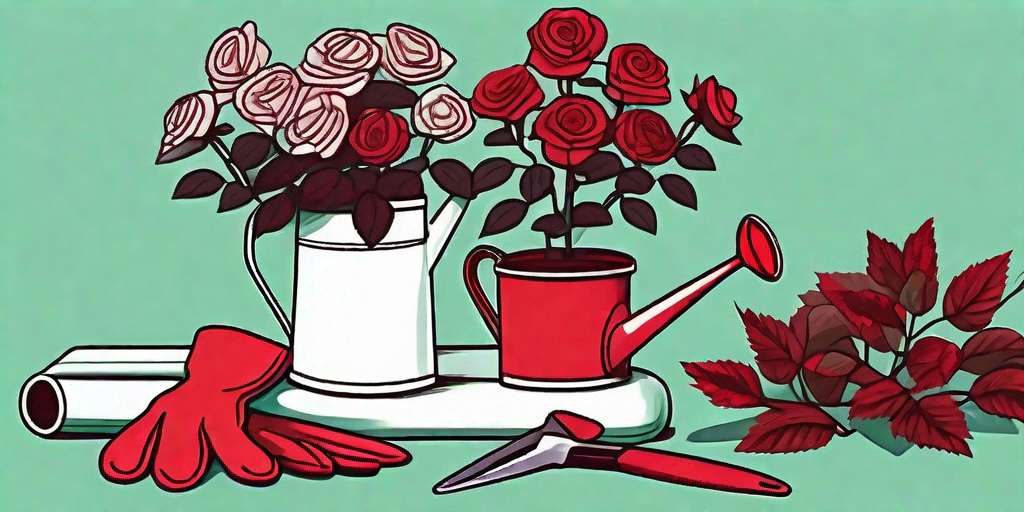
Ah, the rose! A symbol of love, passion, and beauty, and a thorn in the side of many a gardener. But fear not, dear reader, for this guide aims to transform you from a hapless horticulturist into a rose-growing guru. So, put on your gardening gloves, grab your trowel, and let's dive into the world of roses.
The Basics of Rose Bushes
Understanding Rose Types
First things first, not all roses are created equal. There are over 300 species and thousands of cultivars to choose from. From the classic Hybrid Teas to the hardy Shrub Roses, each type has its own unique characteristics and care requirements. So, before you start planting, it's important to know what kind of rose you're dealing with.
Hybrid Teas, for example, are known for their large, high-centered blooms and long stems, making them ideal for cut flowers. Shrub Roses, on the other hand, are hardy, disease-resistant, and can bloom multiple times throughout the season. Then there are Climbing Roses, which, as the name suggests, love to climb. These roses are perfect for trellises, arches, and walls.
Choosing the Right Location
Once you've chosen your rose type, it's time to find them a home. Roses love the sun, so choose a location that gets at least six hours of sunlight each day. They also need well-draining soil to prevent root rot. If your soil is heavy clay or sandy, consider adding organic matter to improve its texture and nutrient content.
Space is another important factor. Roses need room to grow and air to breathe. Planting them too close together can lead to poor air circulation, which can encourage disease. As a general rule, plant roses 2-3 feet apart, depending on their mature size.
Planting and Caring for Your Rose Bushes
Planting Your Roses
Now, let's get down to the nitty-gritty: planting your roses. Start by digging a hole that's wide and deep enough to accommodate the roots of your rose bush. Place the rose in the hole, making sure that the bud union (the swollen part of the stem where the rose was grafted) is level with or slightly above the ground.
Backfill the hole with soil, firm it gently around the base of the plant, and water thoroughly. And voila! You've just planted your first rose bush. Give yourself a pat on the back, or better yet, a celebratory cup of tea. You've earned it.
Caring for Your Roses
Roses may have a reputation for being high maintenance, but with a little TLC, they can thrive. Regular watering, feeding, and pruning are key to keeping your roses happy and healthy. Water deeply at the base of the plant to encourage deep root growth and prevent fungal diseases.
Feed your roses with a balanced rose fertilizer to promote strong, healthy growth. Prune in early spring to remove dead or damaged wood and to shape the plant. And remember, always prune at a 45-degree angle just above a bud that is facing outwards. This encourages outward growth and helps to create an open, vase-shaped bush.
Common Rose Problems and How to Solve Them
Black Spot
Black spot is a common fungal disease that can cause serious damage to your roses. It starts as black spots on the leaves and can lead to defoliation and weakened plants. To control black spot, remove and dispose of infected leaves, avoid overhead watering, and apply a fungicide if necessary.
Rose Rust
Rose rust is another fungal disease that can affect roses. It appears as orange or yellow spots on the underside of leaves. Like black spot, it can be controlled by removing infected leaves, avoiding overhead watering, and using a fungicide.
Frequently Asked Questions
When is the best time to plant roses?
The best time to plant roses is in the spring, after the last frost, or in the fall, at least six weeks before the first frost. This gives the plants plenty of time to establish their roots before the extreme weather hits.
How often should I water my roses?
Roses need regular watering to thrive. In general, a deep watering once a week is sufficient. However, in hot, dry weather, they may need watering every two to three days.
Do roses need a lot of sun?
Yes, roses love the sun! They need at least six hours of direct sunlight each day to bloom their best.
Conclusion
So, there you have it, folks! A comprehensive guide to growing stunning rose bushes. With a little knowledge, a bit of elbow grease, and a dash of patience, you too can stop and smell the red leaves (or pink, or white, or yellow...). Happy gardening!















